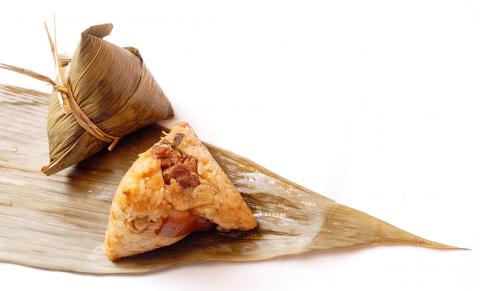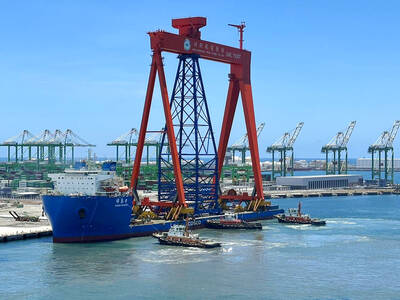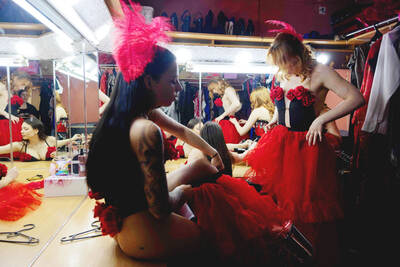The arrival of the Dragon Boat Festival — which takes place tomorrow — heralds the season of spirited dragon boat races. But it turns out that the regatta isn’t the only competition in town.
Every year, the festival enflames a rivalry between supporters of Taiwan’s regional zongzi (粽子), the tetrahedral dumpling made of glutinous rice and fillings wrapped and cooked in leaves.
Zongzi’s legendary association with the life and death of ancient Chinese poet and patriot Qu Yuan (屈原). It’s worth noting that the earliest appearance of leaf-wrapped dumplings in China dates back to the Spring and Summer period (770 to 476 BC), when they were used as offerings to ancestors and deities.

Photo courtesy of Shin Yeh
This means that zongzi eaten across the Chinese diaspora today have undergone at least 2,500 years of research and development. That’s a lot of time for emotions and loyalties to simmer.
In Taiwan, zongzi made in the northern and southern parts of the country are archrivals, pit against each other by anyone who cares to have an opinion about food.
A recurring accusation leveled against northern zongzi is that they are not real zongzi, just the common oiled rice (油飯) stuffed into a leaf. Detractors of southern zongzi are no kinder, hurling abuses at the perceived mushiness of the rice.

Photo: Davina Tham, Taipei Times
As with any issue of social significance, pollsters are never too far away, although their results could cause whiplash.
Earlier this week, online job portal Yes123 reported that 71.5 percent of white-collar workers preferred southern zongzi to the northern variety. Just last week, 7-Eleven told media that its northern zongzi were outselling their southern counterparts, accounting for about 70 percent of sales so far.
These days, commercial choices for zongzi run the gamut from luxurious seafood types filled with abalone, to newfangled flavors based on dishes like sesame oil chicken and beef noodles.

Photo: Yang Hsin-hui, Liberty Times
But regional varieties remain the underlying structure to such innovations, providing cardinal directions to understand the lay of the land of Taiwan’s zongzi.
NORTHERN TAIWAN
Northern zongzi are darker, chewier and oilier than the southern variety because of the way the glutinous rice is prepared. Raw pre-soaked rice is fried with fillings and seasoning until partially cooked, then stuffed into leaves, usually from the Makino bamboo (桂竹), and steamed.

Photo courtesy of Starbucks
Common zongzi fillings across Taiwan include pork, dried shiitake mushrooms and salted egg yolk, to which northerners often add shallots, dried shrimp and dried squid.
The best zongzi can inspire longstanding patronage. Shin Yeh’s (欣葉) version of northern zongzi, packed with braised pork and dried scallops, is an almost 20-year-old classic that sells out every year.
SOUTHERN TAIWAN
In the south, zongzi are made by stuffing raw pre-soaked glutinous rice into sweet bamboo (麻竹) leaves, filling them and then boiling the wrapped dumpling. This method results in a lighter-tasting zongzi with a stickier, closer texture, redolent with the scent of bamboo leaves.
Southern zongzi are more likely to contain peanuts and chestnuts, and are often eaten with a draping of sauce and a sprinkle of crushed peanuts. In Taipei, a quintessential version is served at the popular Wangji Fucheng Zongzi (王記府城肉粽).
HUZHOU
Taipei’s Nanmen Market (南門市場) is the pilgrim’s destination for Huzhou (湖州) zongzi named after their original source in China’s Zhejiang Province. These have a distinctive elongated tetrahedral shape and are available in both savory pork and sweet red bean versions.
Huzhou zongzi are also called waishengzong (外省粽) because of their association with later arrivals who came to Taiwan after the Chinese Nationalist Party (KMT) retreated from China in 1949. But that distinction is quickly breaking down, as Huzhou zongzi become an integral part of Taiwan’s food landscape.
Case in point: Nanmen Market’s Li Family Huzhou Zong (立家湖州粽), which has claimed first place in several rankings of the country’s best, is run by a Hakka chef from Nantou County.
HAKKA
In Hakka banzong (粄粽), the rice grains are replaced with a wickedly sticky dough made of glutinous rice flour. Fillings are distinguished by the use of dried radish and dried tofu.
While banzong are easier to find in the counties with large Hakka populations, Taipei’s city-dwellers can score them from Fan Grandma’s Hakka Food (范媽客食), which delivers and sets up shop at the Hakka Cultural Park (客家文化主題公園) every weekend.
ALKALINE
Jianzong (鹼粽), also called jingzong (粳粽), are a Cantonese style of zongzi made from glutinous rice that has been soaked in alkaline water. The alkaline environment accelerates the rate of starch gelatinization — in layperson’s terms, a process in which starch molecules in the rice swell, break down and take up water.
This preparation yields a translucent, amber grain that is particularly soft and chewy. Jianzong are exclusively eaten sweet, often filled with red bean paste, or else plain with sugar or syrup to dip.
‘SNOW SKIN’
While jianzong are becoming increasingly hard to find, another dessert contender is just getting started. “Snow skin” (冰皮) zongzi are a crossover from “snow skin” mooncakes, with their defining feature being a translucent outer layer made of glutinous rice flour.
The novelty of “snow skin” zongzi lends itself to the most whimsical flavors yet. This year, I-Mei Foods (義美) has developed a frozen zongzi with milk tea filling, based on its popular beverage.
ABORIGINAL
The Paiwan, Rukai, Puyuma and Amis communities make a leaf-wrapped pork dumpling called abai (阿拜).
This dumpling has no connection to the Dragon Boat Festival, although abai are traditionally served on celebratory occasions and to welcome distinguished guests. Instead of glutinous rice, they are made with yellow foxtail millet wrapped first in a herb that is eaten with the dumpling, and then in an outer layer of shell ginger leaf (月桃葉).
Like Aboriginal cuisine on the whole, abai is elusive unless a special excursion is made to the source in an Aboriginal community. But it’s a leading example of the diversity of zongzi, reflecting the diverse cultures and histories of Taiwan’s people.

The canonical shot of an East Asian city is a night skyline studded with towering apartment and office buildings, bright with neon and plastic signage, a landscape of energy and modernity. Another classic image is the same city seen from above, in which identical apartment towers march across the city, spilling out over nearby geography, like stylized soldiers colonizing new territory in a board game. Densely populated dynamic conurbations of money, technological innovation and convenience, it is hard to see the cities of East Asia as what they truly are: necropolises. Why is this? The East Asian development model, with

June 16 to June 22 The following flyer appeared on the streets of Hsinchu on June 12, 1895: “Taipei has already fallen to the Japanese barbarians, who have brought great misery to our land and people. We heard that the Japanese occupiers will tax our gardens, our houses, our bodies, and even our chickens, dogs, cows and pigs. They wear their hair wild, carve their teeth, tattoo their foreheads, wear strange clothes and speak a strange language. How can we be ruled by such people?” Posted by civilian militia leader Wu Tang-hsing (吳湯興), it was a call to arms to retake

This is a deeply unsettling period in Taiwan. Uncertainties are everywhere while everyone waits for a small army of other shoes to drop on nearly every front. During challenging times, interesting political changes can happen, yet all three major political parties are beset with scandals, strife and self-inflicted wounds. As the ruling party, the Democratic Progressive Party (DPP) is held accountable for not only the challenges to the party, but also the nation. Taiwan is geopolitically and economically under threat. Domestically, the administration is under siege by the opposition-controlled legislature and growing discontent with what opponents characterize as arrogant, autocratic

When Lisa, 20, laces into her ultra-high heels for her shift at a strip club in Ukraine’s Kharkiv, she knows that aside from dancing, she will have to comfort traumatized soldiers. Since Russia’s 2022 invasion, exhausted troops are the main clientele of the Flash Dancers club in the center of the northeastern city, just 20 kilometers from Russian forces. For some customers, it provides an “escape” from the war, said Valerya Zavatska — a 25-year-old law graduate who runs the club with her mother, an ex-dancer. But many are not there just for the show. They “want to talk about what hurts,” she